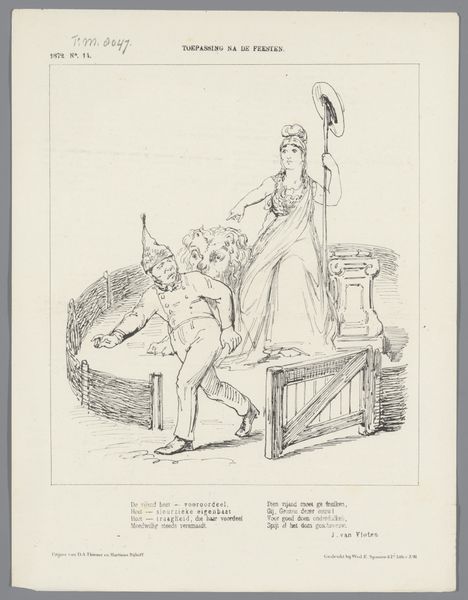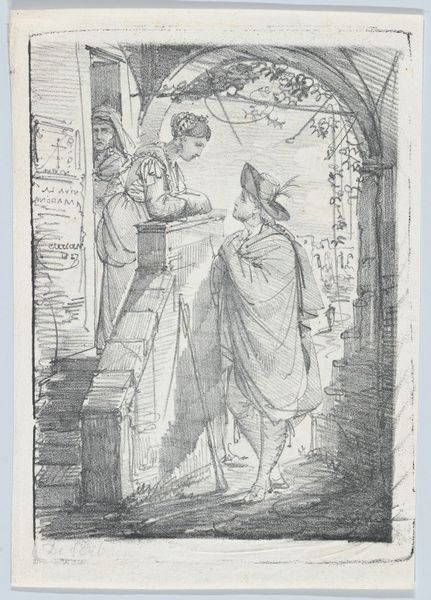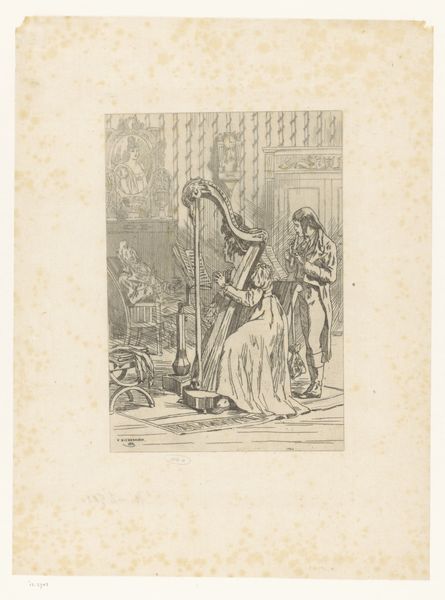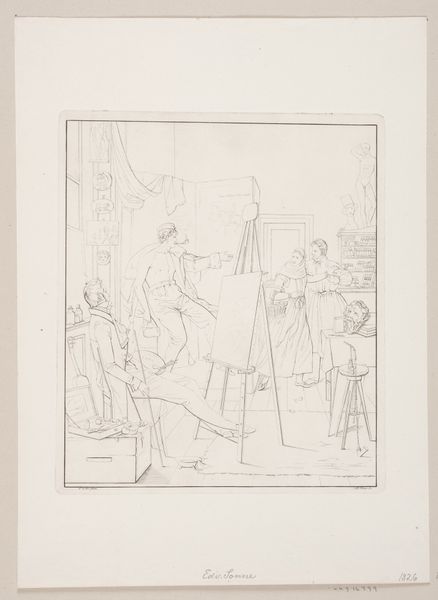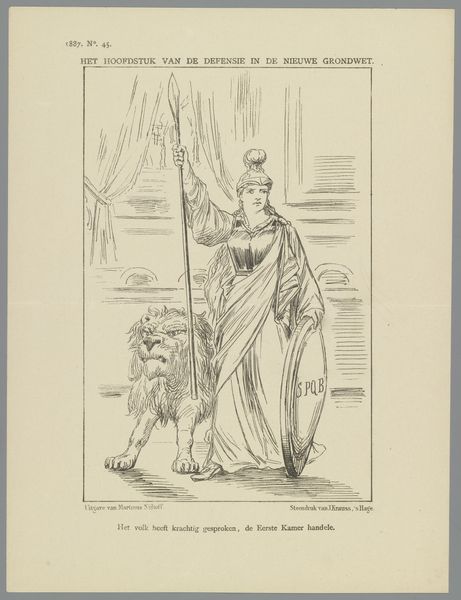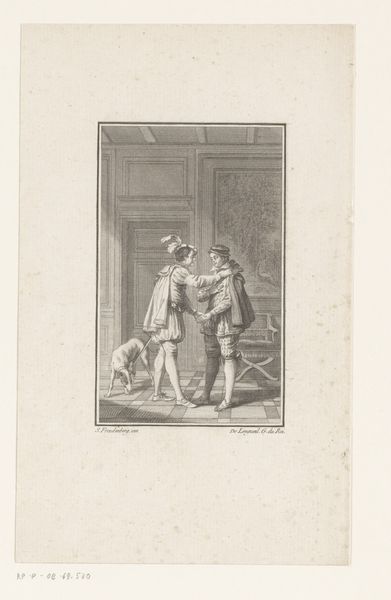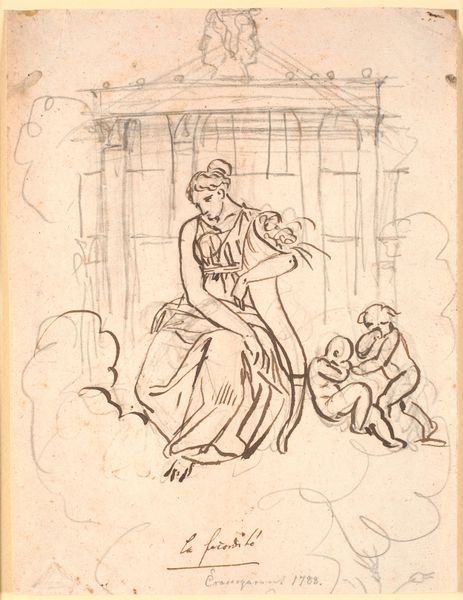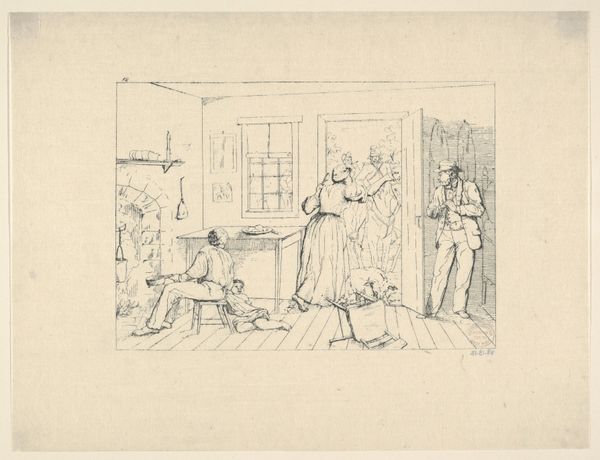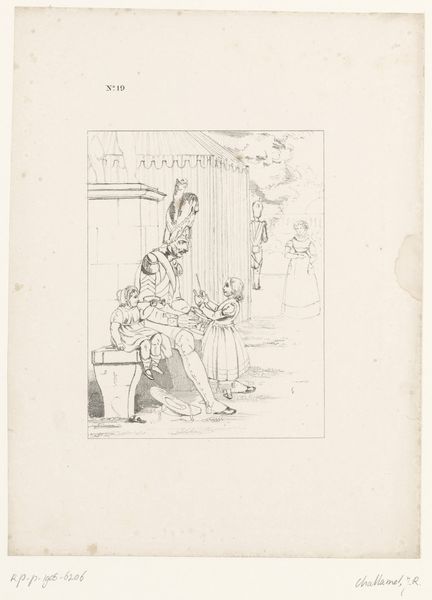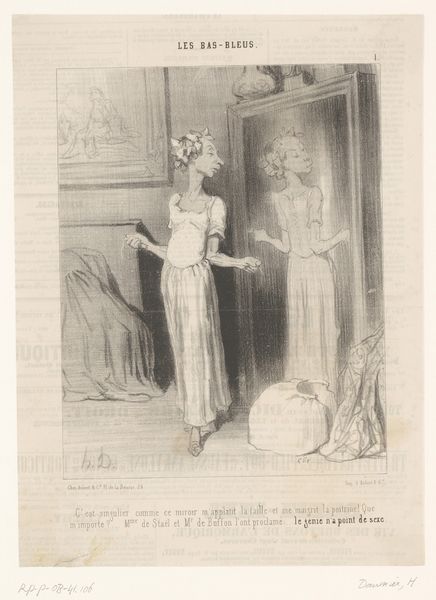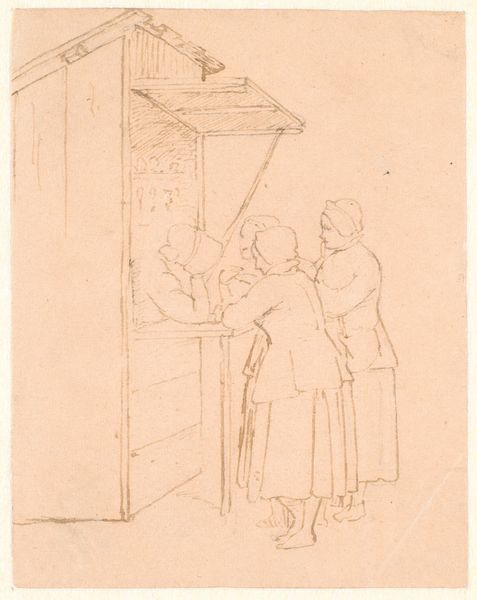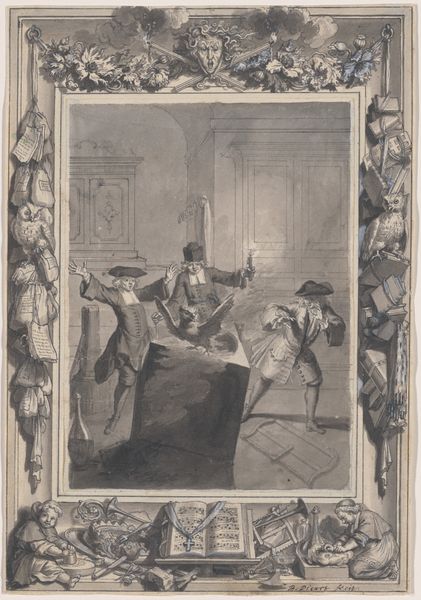
drawing, pencil
#
drawing
#
caricature
#
pencil
#
genre-painting
Dimensions: height 395 mm, width 273 mm
Copyright: Rijks Museum: Open Domain
Curator: This pencil drawing, dating back to possibly 1895, is titled "Tijdens de kermis," which translates to "During the Fair." It's by Salomon Goslinski, a Dutch artist known for his caricatures and genre paintings. Immediately I'm struck by the stark simplicity. The artist’s deliberate and economic use of line directs my eyes to a very melancholic encounter. Editor: Melancholic, yes. But I'm drawn more to the figures themselves, to the contrasting visual rhetoric used in depicting them. There is Apollo, seemingly animated, stepping towards what I can assume represents his captive: a royal yet despairing statue. We are visually seduced by a highly formalized and somewhat cruel narrative about freedom, identity, and dispossession. Curator: Absolutely, and considering the fair as a site of spectacle, this piece invites us to consider the commodification of power, and particularly of royalty. Perhaps Goslinski is commenting on the decline of monarchies in the face of burgeoning modernity, showcasing the spectacle of what was. The use of ancient Greek costuming and allegorical names definitely points in this direction, particularly if you understand this work through contemporary ideas about historical materialism, for example, and the notion of linear progression in human civilization. Editor: True, it does seem Goslinski draws upon art-historical tropes of conquest, or seduction, yet, as a graphic device, there's also the visual parallel with statuary that allows Goslinski to emphasize the weight and density of pencil marks as an almost sculptural modeling. In its simplicity of composition, and in its very limited use of hatching, it has a neo-classical air that might ironically amplify his intentions. I think a formalist, neo-classical mode may enhance that feeling. Curator: Right. Perhaps the point here is to disrupt normative assumptions, suggesting that figures are always and already captives, subject to dominant narratives, and particularly to the forces of class and gender? What exactly is ‘liberty’ to one subjugated, ‘royal’ figure relative to the social freedom that the god bestows? It is something he forces upon her as part of a broader, theatrical public event—part of his divine right? Editor: The tension between constraint and performance is potent here. By creating such a sparse scene with a single light source, Goslinski also directs us, formally speaking, toward the core elements of theatre: focus, script, and performance. Curator: It’s fascinating how context can reshape our view. What seemed at first a simple street scene gains complexity when we consider its layered engagement with historical and social anxieties of the era. Editor: Precisely, it allows us to understand that the artwork is as rich in social and historical understanding, and even in its simplicity and subtle technique it presents very important insight.
Comments
No comments
Be the first to comment and join the conversation on the ultimate creative platform.
